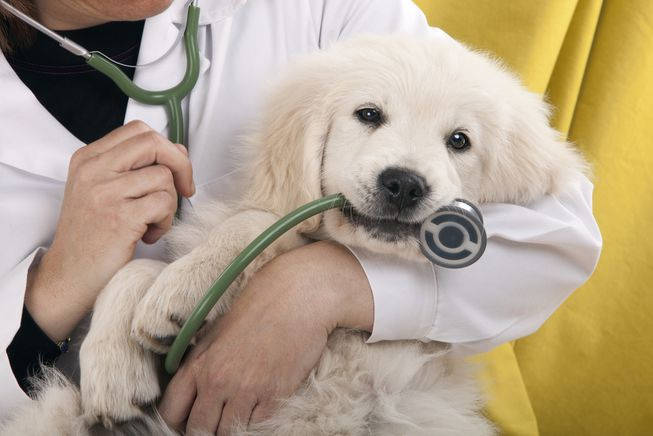Why Does My Dog Go Between My Legs When Playing

1. Introduction
Have you ever noticed your dog going between your legs when playing? If so, you may be wondering why they do this and if it’s normal behavior. In this article, we’ll explore the reasons why dogs go between their owners’ legs and discuss the benefits and drawbacks of encouraging or discouraging this behavior. We’ll also provide some tips for training your dog to behave in a way that works for everyone.
2. What Does It Mean When My Dog Goes Between My Legs?
When a dog goes between its owner’s legs, it is usually an attempt to seek comfort or protection. For some dogs, this is a way of showing submission and respect to their owner, while for others it may be a sign of anxiety or fear. This behavior can range from simply standing between the owner’s legs to actually curling up into a ball and trying to hide.
3. Why Does My Dog Do This?
There are several potential reasons why your dog might go between your legs when playing. One possibility is that they are seeking comfort and security from you, as their owner. Dogs are social animals who form strong bonds with their owners and look to them for guidance and protection. Going between your legs is one way that dogs show that they feel safe and secure with you.
Another reason could be that your dog is trying to show submission or respect towards you. By going between your legs, they are effectively “bowing” down to you in a sign of deference. This behavior is more common in puppies but can also be seen in adult dogs who may be trying to demonstrate their loyalty to you.
Finally, it could be a sign of anxiety or fear in your dog. If your dog has had a traumatic experience or feels threatened by something in their environment, they may try to hide between your legs as a way of seeking safety and security from you.
4. Is It Normal Behavior?
Yes, it is normal for dogs to go between their owners’ legs when playing or feeling anxious or scared. While this behavior can be seen as cute by some owners, it can also become problematic if it becomes too frequent or intense. If your dog seems overly anxious or fearful when going between your legs, then it may be time to seek professional help from a veterinarian or animal behaviorist.
5. Is There Anything I Can Do To Stop It?
Yes, there are some things you can do to discourage this behavior if it becomes too frequent or intense:
• Make sure that your dog has plenty of positive outlets for energy – such as exercise, playtime, and mental stimulation – so that they don’t feel the need to seek comfort in other ways (such as going between your legs).
• Give them space when they need it – if they start going between your legs during playtime, give them some time alone until they calm down before continuing the game.
• Provide plenty of opportunities for them to practice good behaviors – reward them with treats and praise when they do something right instead of punishing them for going between your legs too often.
• If necessary, consult with a professional – if the behavior persists despite these efforts then it may be time to seek help from an animal behaviorist or vet who can help identify the root cause of the problem and provide advice on how best to address it.
6. The Benefits of Encouraging This Behavior
While it’s important not to let this behavior become too frequent or intense (as mentioned above), there are also benefits to encouraging this type of behavior in certain circumstances:
• It shows that your dog trusts you – by going between your legs, they are demonstrating that they feel safe with you and trust you enough to seek comfort from you in times of distress or fearfulness.
• It reinforces the bond between you – when dogs go between their owners’ legs during playtime, it can help strengthen the bond between them as well as remind us that our pets rely on us for safety and security just like any other family member would do!
• It can help reduce anxiety levels – if done correctly (with plenty of positive reinforcement), going between your legs can actually help reduce anxiety levels in some dogs by providing them with comfort and reassurance during times of stress or fearfulness.
7 Training Tips for Discouraging Unwanted Behavior
If you find yourself needing to discourage this type of behavior due to its frequency or intensity then here are some tips that may help:
• Don’t punish – instead focus on rewarding good behaviors such as sitting calmly at your feet instead of going between them; use treats and praise liberally!
• Provide alternative activities – make sure there are plenty of fun activities available for your pup such as fetching toys, playing tug-of-war, etc., so that they don’t resort to seeking comfort through going between your legs;
• Make sure there’s no danger – check the area around where you’re playing with them regularly so that there isn’t anything scaring them; if there is then remove it immediately;
• Give them space – if needed give them some space until they calm down before continuing playtime; remember not all dogs respond well when we try to cuddle/pet them while they’re feeling anxious;
• Seek professional help – if all else fails then consider seeking advice from a professional such as an animal behaviorist who will be able to assess the situation more accurately and provide tailored advice on how best to address any issues;
8 How To Make Sure Your Dog Feels Safe And Secure
It’s important that we make sure our furry friends always feel safe and secure in our presence:
• Provide lots of positive reinforcement – reward good behaviors with treats/praise/playtime/etc.; avoid using punishments which can make them fearful;
• Spend quality time together – make sure you spend quality time together every day doing activities like walking/playing/cuddling/etc.; this helps build trust and strengthens the bond;
• Create a safe environment – make sure there’s nothing scary around (e.g., loud noises) which could trigger anxiety; give them somewhere comfortable (e.g., bed) where they can relax away from any potential threats;
• Show affection – display affectionate behaviors towards them such as petting/cuddling/talking softly/etc.; these will help reassure them that everything is ok;
• Consult professionals – if needed consult professionals such as vets/animal behaviorists who will have more insight into what’s causing any issues and how best to address them;
9 Signs Of Anxiety Or Stress In Dogs
It’s important to recognize signs of anxiety or stress in our pets so we know when something isn’t quite right:
• Excessive barking/whining – these could indicate fearfulness/anxiety;
• Panting/drooling – these could indicate discomfort due to heat/stress;
• Cowering/shaking – these could indicate fearfulness;
• Aggression – these could indicate fearfulness/anxiety;
• Hiding/escaping – these could indicate fearfulness/anxiety;
• Loss of appetite – these could indicate stress due to changes in environment/routine etc.;
• Excessive licking/chewing – these could indicate boredom/stress due to lack of stimulation etc.;
If any of these signs appear then take note and watch out for any changes which may suggest something isn’t quite right with our furry friends!
< h 2 > 10 . Professional Help If Necessary < / h 2 >
If any signs of anxiety or stress persist despite efforts made at home then consider seeking professional advice from vets/animal behaviorists who will have more insight into what’s causing any issues & how best to address them accordingly! They may even recommend medications which can help reduce feelings of stress & anxiety in our pets!
< h 2 > 11 . Conclusion < / h 2 > So while it’s normal & sometimes even beneficial for our pets



